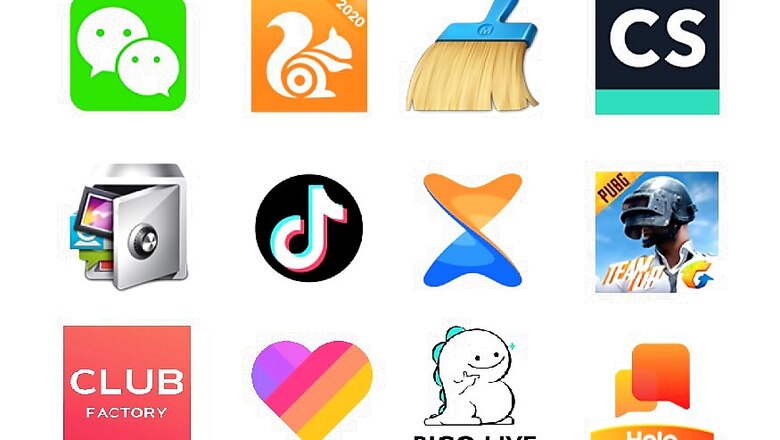
views
The decision to ban the 59 Chinese apps by Prime Minister Narendra Modi has given the Indian app, or mobile application developing community an opportunity of their life time. Indigenous competitors to the likes of TikTok, which is on the banned list, could not have bargained for a better utopia. A ban on international heavy weight like TikTok, opens a growing mature market of TikTok users is no less than utopia for the Indian app developers. The TikTok celebrities and their followers are literally getting impatient in their wait for the Indian competitors to provide that international performance and quality that they have got so addicted to, over the years. The competition to gain the space shall be fierce but reaching a ‘Unicorn’ status will require a new strategy and skill sets.
The situation is analogous to the late 1970s when the leadership banished all foreign automobile makers for selling cars in the Indian market. This gave the Ambassador and Premier Padmini cars a free run to serve the ‘bound’ Indian market, till the Japan-backed Maruti Suzuki came along in mid-1980’s. The two Indian cars altered little only to reach the iconic status with their recognizable shapes being synonymous with other historic monuments of the country. While on the other hand the automobile sector of the world advanced with leaps and bounds to produce a very different breed of cars which not only looked totally different but were much safer, comfortable, and were efficient with petrol consumption, power, cruising speeds and much more. Thus when the 1990s brought back the foreign players the Indian competitors had to shut shop.
In the information technology and software sector, this generation of entrepreneurs can learn from that page in history and utilize all the resources at their disposal supported by the present leadership's political will towards ‘Atmanirbhar Bharat’ (self sufficient India) and transform themselves into true Unicorn status competitors to the banned apps.
Akin to an athlete who changes a coach or trainer as he/she moves up to compete from the city or state level to the national level and then the Olympics, the Indian app developers might need to re-look their strategy, technology, advisors to move up their game.
Meanwhile, the marooned user base of celebrities, followers and viewers of those 59 banished Chinese apps have international grade expectations, the indigenous app developer community. These users have by now been accustomed to a superior level of user interface (UI) and a new level of user experience (UX), which in the IT lingo is just called UI/UX, along with curation technologies at work behind the scenes.
As the New York Times noted that TikTok's curated content database answers assertively 'what should I post' and with a plenty for 'what should I watch'. An RTI revealed that in response to a Ministry of Electronics and Information Technology's (MEITY) questionnaire TikTok shared it can remove any content in 3 hours and uses artificial intelligence and machine learning to curate content albeit using data whose procurement was questionable to start with.
This is the level the Indian competitor should operate at, using sophistication while staying clear of the alleged data malpractices of the Chinese apps in terms of collecting user data. Also in legal areas where the Indian framework is still evolving, it would bode the Indian makers well to garner a positive image by adopting and following self regulation practices in line with the enhanced legal frameworks of other developed countries.
Apart from the computer technologies and legal frameworks there are a lot more tangible and intangible strategies deployed by these Chinese apps to reach and maintain their multibillion dollar valuations. For example, it's known that CEO of TikTok maker ByteDance, made it mandatory for all his employees to make and publish their own content on TikTok. And those who could not go past a specific threshold number of followers were made to do push ups in office. From a business strategy perspective though, a bit authoritarian, this strategy does make every individual employee acutely tuned to the TikTok market and totally in sync with each other. Indian competitors will also need such innovative strategies to drive that edge over their competitors.
Expectations from app makers grow so do their demands from the Indian entrepreneurial ecosystem. For example, expectations of more advanced entrepreneurial policy support in the form of other tangibles and intangibles above and beyond financial support. And higher expectations from the venture capital community to provide access to experienced advisors, board members etc. who have hands on experience with similar meteoric economic value building in the past. And in return all have an opportunity to cash in on this expected ‘gold rush’.
The onus is now squarely upon the community to out perform the other foreigners and fill the void left behind by the Chinese apps. Time and again the country has taken pride in its software prowess and the app ‘gold rush’ has begun.
About The Author
The writer is a Sloan Fellow from Stanford Graduate School of Business and specializes in creating entrepreneurial ecosystems worldwide. And the former head of business consulting in the Americas for Starburst Accelerator, the world's largest aerospace and defense startup accelerator. He holds a US patent in semiconductors & cybersecurity and focused on research in cellphone technologies at University of California, Irvine. He has also been a panelist for the American SBIR program for almost a decade. He is presently based in India focused on the startup ecosystem after doing the same in the US for almost two decades. Twitter: @anshufellow


















Comments
0 comment